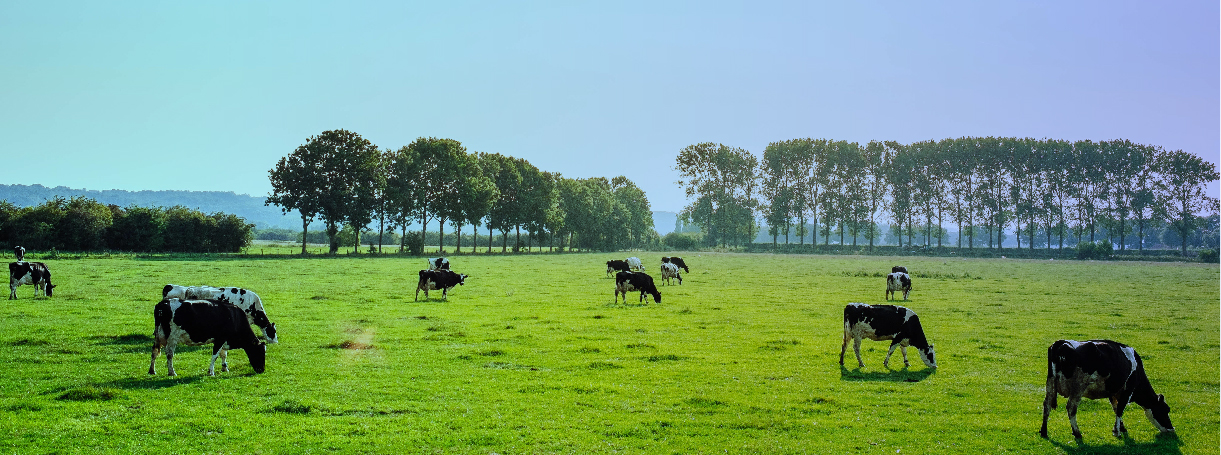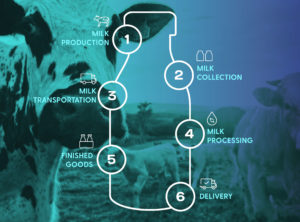No more spilt milk. IoT-based improvements for dairy in India
maximises and safeguards the dairy value chain from production
to delivery
Since the ‘white revolution’, there’s been a surge in the production of milk in our country. At last count, India was responsible for over 18% of the world’s total milk production. We have an organised sector that is bigger than that of the EU and the US, with steadily rising demand. In fact, the Indian dairy market is expected to grow at 23% every year.
Yet, so much of the iceberg that is Indian dairy sector lies below the waterline. In order to optimise the workings of a sector which is still largely unorganized, Amnex is building automated tools that leverage IoT and advanced analytics to improve milk yield for India’s small dairy farmers. Their efforts have pioneered a range of IoT offerings for the dairy sector that covers the entire value chain. There is a different set of solutions for each stage in the manufacture and processing of milk. The solutions create the convergence of multiple technologies, real-time analytics, commodity sensors, and embedded systems.
- Milk Production Stage
Conventionally, milk production occurs at the farm level. Amnex enables farmers to track the health of a cow with the help of a wearable sensor. The sensor works just as a fitness tracker does and measures important details such as milk quantity and yield. Farmers can now compare the immediate feedback that they receive from each cow to improve productivity and increase income.
- Milk Collection Stage
The surge in milk production in Indian dairy owes itself to the adoption of process enrichment techniques at the Milk Collection Centre. As of now, these collection centers are equipped with a Bulk Milk Chilling Unit (BMCU) that stores milk at a predefined temperature. Innovative and advanced sensors from Amnex monitor the temperature of the BMCU and share real-time details with the Central Monitoring Cell. The Cell has been empowered to oversee the collection center’s operation using Amnex’s reliable surveillance system. A communication channel enables direct communication with the Central Monitoring Cell for all stakeholders. Also, Amnex’s digital payment system helps issue payments to dairy farmers in real-time as per the quality and quantity of milk provided.
- Milk Transportation Stage
The transportation of milk from the collection center to the central plant is a crucial stage in the value chain. It has also been observed that most malpractices occur at this stage. To curb the malpractices, it was vital to bring visibility and transparency to the process.
Amnex’s Fleet Monitoring System tracks the milk tanker in real-time. The system is highly configurable and calculates the shortest path between the milk collection center and the central plant. It triggers alerts in case of any malpractice, whether they be route deviations, unwanted stops or breakdowns. When necessary, the Central Monitoring Cell can directly connect with the driver of the tanker driver via a two-way communication device.
Amnex’s Fuel Management System adds efficiency to the transportation of milk by helping to reconcile the massive quantities of fuel needed for the tankers. The automatic system fuels the authorized tanker so that the amount of fuel dispensed is squared with the available deposits. The Fuel Management System also provides a complete audit trail for the fuel expenditure.
For in-plant transportation, Amnex’s Automated Verification System at the gate can reduce turnaround time within the plant area, eliminating the scope of wrong entries or double entries.
- Milk Processing Stage
In order to process milk and convert into desirable end-products, the central plant utilises industrial automation technology. Yet, scattered data makes it difficult to enforce a holistic approach towards decision-making. Amnex’s amalgamated platform combines various systems such as SAP, MIS and automation, and works as a great enabler in this regard. The platform lets users monitor and control on-ground operations from a centralised hub. It also enables rapid responses and protocols for alerts and violations.
- Finished Good Products Stage
Once the milk has been transformed into a finished product, storage as per the correct specifications of batch and production date are key. If the necessary steps aren’t taken, wastage becomes imminent for a product as perishable as milk. Amnex’s Inventory Management System is highly-effective against product-aging. The fully automated process-based identification does not require the use of trained personnel, reducing the need for manpower.
- Delivery Stage
At various outlets, wherever dairy products are sold, Amnex’s Point of Sales systems streamline operations. The system can handle any combination of discounts, taxes, returns, credits and sales specials in one easy transaction. With the aid of common barcode scanners and touch screen interfaces, sales are processed quickly and efficiently.
If a request product is not in stock, a customer order can be sent to the purchase order system. This system works with all the modern retail devices including barcodes, customer display, cash drawers, bar-coded scales and runs on any network. It saves time, increases accuracy and provide greater control over what happens at the sales counter.







